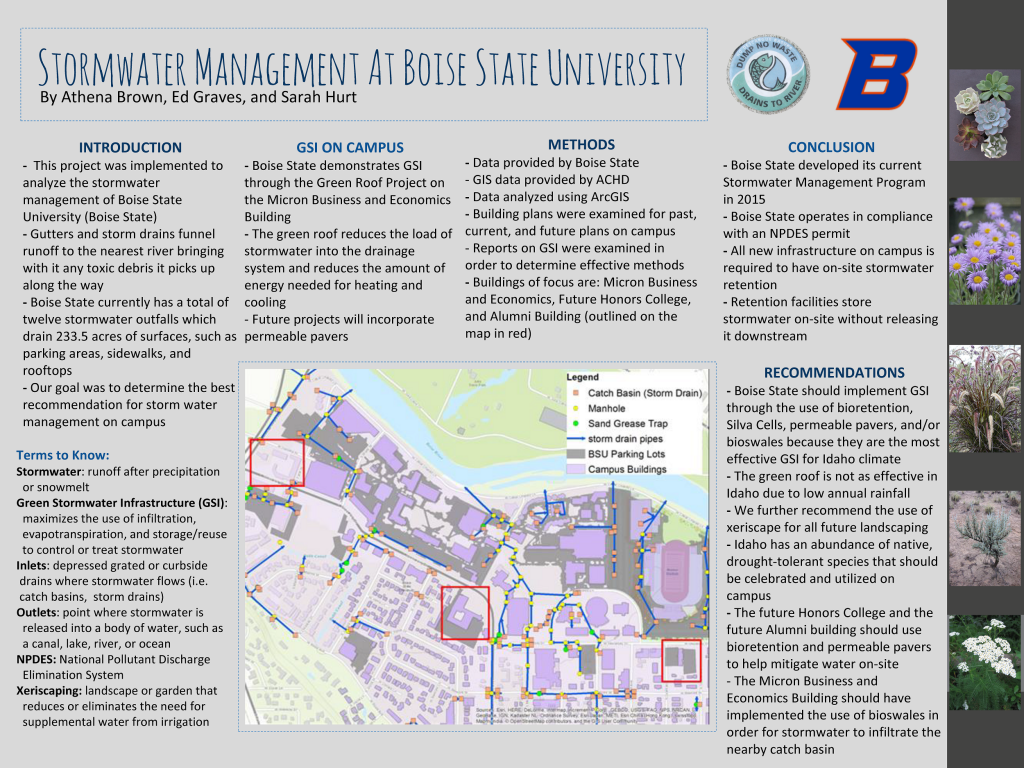Stormwater Management At Boise State University

By Athena Brown, Ed Graves, and Sarah Hurt
Introduction
This project was implemented to analyze the stormwater management of Boise State University (Boise State). Gutters and storm drains funnel
runoff to the nearest river bringing with it any toxic debris it picks up along the way. Boise State currently has a total of twelve stormwater outfalls which drain 233.5 acres of surfaces, such as parking areas, sidewalks, and rooftops. Our goal was to determine the best recommendation for storm water management on campus.
Terms to Know
- Stormwater: runoff after precipitation or snowmelt
- Green Stormwater Infrastructure (GSI): maximizes the use of infiltration, evapotranspiration, and storage/reuse to control or treat stormwater
- Inlets: depressed grated or curbside drains where stormwater flows (i.e. catch basins, storm drains)
- Outlets: point where stormwater is released into a body of water, such as a canal, lake, river, or ocean
- NPDES: National Pollutant Discharge Elimination System
- Xeriscaping: landscape or garden that reduces or eliminates the need for supplemental water from irrigation
GSI on Campus
Boise State demonstrates GSI through the Green Roof Project on the Micron Business and Economics Building. The green roof reduces the load of stormwater into the drainage system and reduces the amount of energy needed for heating and cooling. Future projects will incorporate permeable pavers.
Methods
- Data provided by Boise State
- GIS data provided by ACHD
- Data analyzed using ArcGIS
- Building plans were examined for past, current, and future plans on campus
- Reports on GSI were examined in order to determine effective methods
- Buildings of focus are: Micron Business and Economics, Future Honors College, and Alumni Building (outlined on the map in red)
Conclusion
Boise State developed its current Stormwater Management Program in 2015. Boise State operates in compliance with an NPDES permit. All new infrastructure on campus is required to have on-site stormwater retention. Retention facilities store stormwater on-site without releasing it downstream.
Recommendations
- Boise State should implement GSI through the use of bioretention, Silva Cells, permeable pavers, and/or bioswales because they are the most effective GSI for Idaho climate
- The green roof is not as effective in Idaho due to low annual rainfall
- We further recommend the use of xeriscape for all future landscaping
- Idaho has an abundance of native, drought-tolerant species that should be celebrated and utilized on campus
- The future Honors College and the future Alumni building should use bioretention and permeable pavers to help mitigate water on-site
- The Micron Business and Economics Building should have implemented the use of bioswales in order for stormwater to infiltrate the nearby catch basin